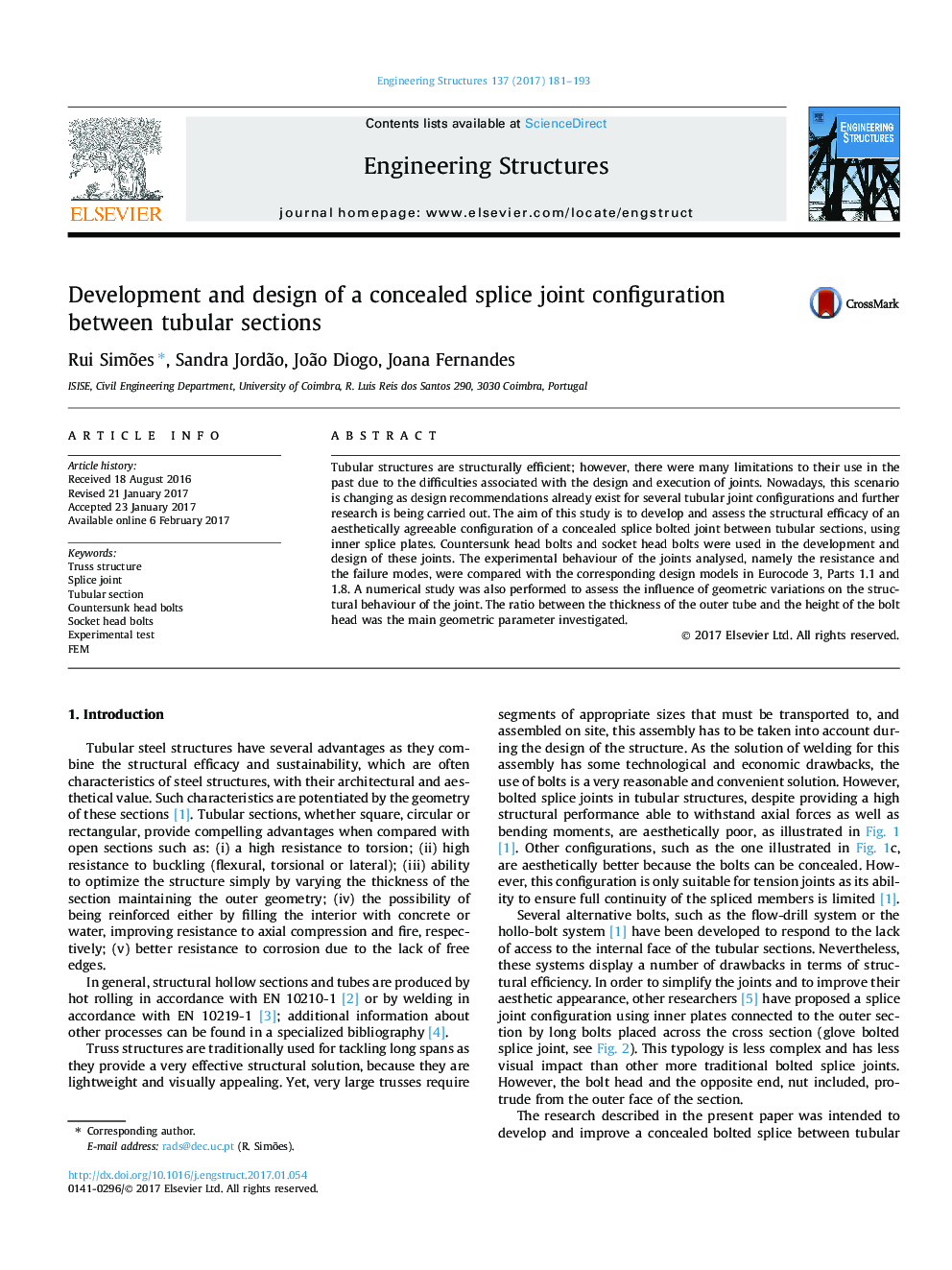| Article ID | Journal | Published Year | Pages | File Type |
|---|---|---|---|---|
| 4920293 | Engineering Structures | 2017 | 13 Pages |
Abstract
Tubular structures are structurally efficient; however, there were many limitations to their use in the past due to the difficulties associated with the design and execution of joints. Nowadays, this scenario is changing as design recommendations already exist for several tubular joint configurations and further research is being carried out. The aim of this study is to develop and assess the structural efficacy of an aesthetically agreeable configuration of a concealed splice bolted joint between tubular sections, using inner splice plates. Countersunk head bolts and socket head bolts were used in the development and design of these joints. The experimental behaviour of the joints analysed, namely the resistance and the failure modes, were compared with the corresponding design models in Eurocode 3, Parts 1.1 and 1.8. A numerical study was also performed to assess the influence of geometric variations on the structural behaviour of the joint. The ratio between the thickness of the outer tube and the height of the bolt head was the main geometric parameter investigated.
Related Topics
Physical Sciences and Engineering
Earth and Planetary Sciences
Geotechnical Engineering and Engineering Geology
Authors
Rui Simões, Sandra Jordão, João Diogo, Joana Fernandes,
